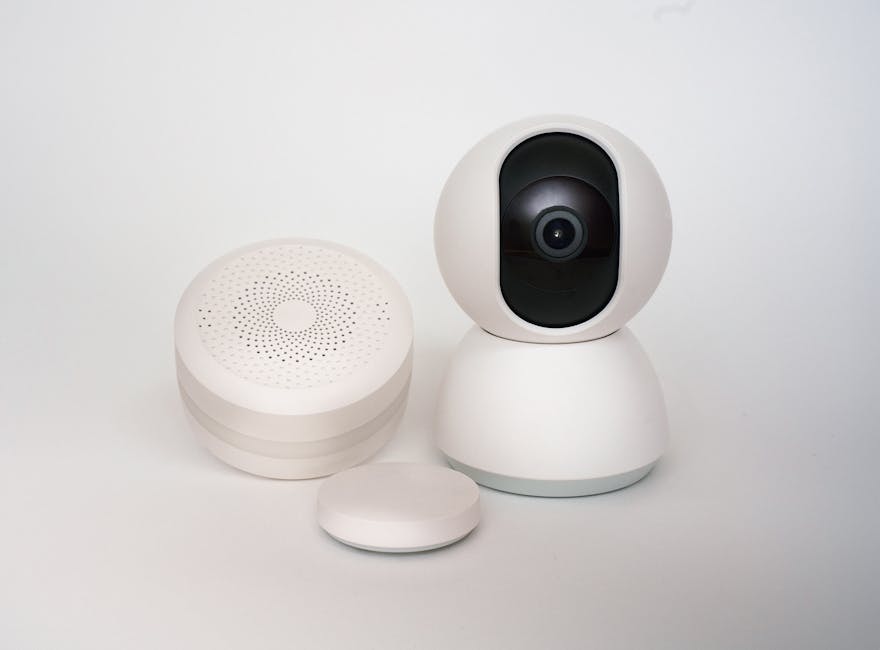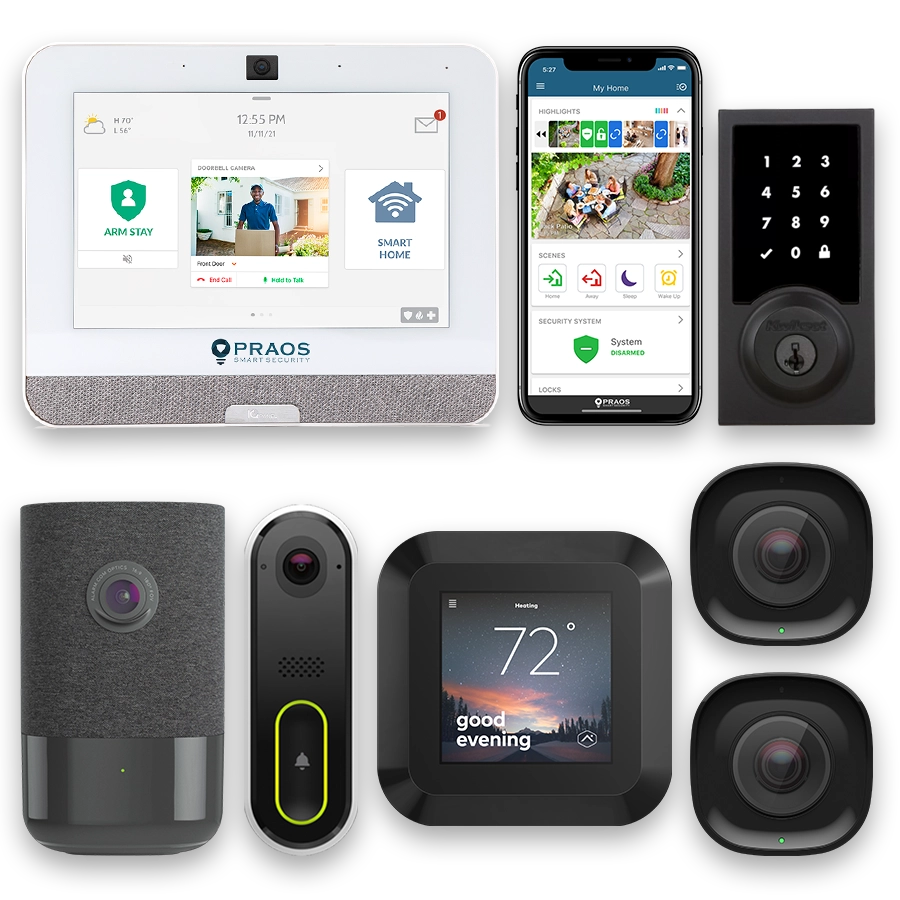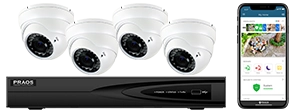- The Current State of Commercial Security Systems in Richmond
- Understanding Advanced Security Automation Technologies
- Role of Artificial Intelligence in Security Automation
- Integrating AI with Existing Security Infrastructure
- Benefits of AI-Driven Security Automation for Richmond Businesses
- Challenges and Considerations in AI Integration
- Case Studies of Successful AI Integration in Richmond
- Future Trends and Innovations in AI-Enhanced Security Systems
The Current State of Commercial Security Systems in Richmond
Commercial security systems in Richmond play a critical role in safeguarding businesses from various threats, including theft, vandalism, and unauthorized access. The current state of these security systems involves a variety of technologies and practices that have evolved over time to address the unique challenges faced by commercial entities.
Prevalent Security Technologies
The security systems deployed in Richmond’s commercial sector generally include surveillance cameras, access control systems, alarm systems, and security personnel. Each of these components offers specific functionalities aimed at protecting assets and ensuring the safety of employees and customers.
- Surveillance Cameras: These are widely used for monitoring activities within and around business premises. The use of high-definition digital cameras, along with network video recorders (NVRs), is common.
- Access Control Systems: These systems manage who can enter or exit a building, often using key cards, biometric scanners, or keypad entries.
- Alarm Systems: Alarm systems detect unauthorized entry, fire, or other emergencies, alerting security personnel and local authorities.
- Security Personnel: Human guards complement technological solutions by providing physical presence and immediate response capability.
Statistics on Security Incidents
According to the Richmond Police Department’s 2022 Annual Report, there has been a notable decline in commercial burglaries and related incidents, attributed partly to improved security measures. Below is a table highlighting key statistics:
| Type of Incident | Number of Incidents (2022) |
|---|---|
| Commercial Burglary | 350 |
| Vandalism | 420 |
| Unauthorized Access | 200 |
Trends in Security System Adoption
There has been a trend towards the adoption of more integrated and sophisticated security solutions. Many businesses are moving from standalone systems to interconnected security networks that can provide comprehensive protection. For instance, there is an increased use of Security Information and Event Management (SIEM) systems, which aggregate data from various security devices and provide real-time analysis of potential threats.
Another notable trend is the rise of cloud-based security systems. These systems offer scalability, remote monitoring, and improved data storage capabilities, making them an attractive option for businesses of different sizes.
Overall, the commercial security landscape in Richmond is marked by both traditional practices and emerging technologies, which together form a robust framework for protecting commercial assets. Businesses are continually seeking more efficient and innovative ways to enhance their security posture in response to evolving threats.
Understanding Advanced Security Automation Technologies
Advanced security automation technologies have made significant strides in recent years, marking a transformative evolution in the field of commercial security. These cutting-edge solutions incorporate numerous sophisticated components designed to enhance security, efficiency, and response times.
Key Components of Advanced Security Automation
Advanced security systems are comprised of several technologies that work in tandem to provide a comprehensive security solution.
- Surveillance Cameras: Modern surveillance cameras offer higher resolution, wider fields of view, and night vision capabilities. Many come equipped with motion detection and automated event-triggered recording.
- Access Control Systems: These systems manage and monitor access to specific areas within a facility, often using keycards, biometrics, or mobile credentials to ensure only authorized individuals can enter restricted zones.
- Intrusion Detection Systems: Intrusion detection systems utilize a combination of sensors, including motion detectors, glass-break sensors, and contact sensors, to detect unauthorized entry and immediately alert security personnel.
- Alarm Systems: Alarms can be integrated with other security components for automated responses, such as triggering video recording, locking down access points, or notifying law enforcement.
- Cybersecurity Measures: Protecting digital infrastructure is becoming increasingly important. This includes firewalls, encryption, intrusion detection systems, and regular security audits to safeguard data and network integrity.
Integration and Automation
The integration of these technologies into a cohesive security ecosystem allows for higher levels of automation. For example, when a motion sensor detects movement after hours, it can trigger the associated camera to begin recording and activate the alarm system, while immediately notifying the security team via their mobile devices or control center monitors.
This level of automation not only ensures rapid response to incidents but also significantly reduces the likelihood of human error. Predefined protocols can be followed automatically, ensuring consistent and predictable handling of security breaches.
Key Automation Techniques
Several techniques and technologies are utilized to achieve advanced automation in security systems:
- Workflow Automation: Predefined workflows handle specific events in a predefined sequence, eliminating the need for manual interventions.
- Real-Time Analytics: Data from various sensors and devices is collected and analyzed in real-time to detect anomalies and trigger appropriate actions promptly.
- Event Correlation: Security systems can correlate data from multiple sources to provide a comprehensive view of an incident, ensuring better decision-making.
- Remote Monitoring: Security personnel can monitor and manage security systems from remote locations, ensuring continuous oversight regardless of physical presence.
Enhancing Security with Automation
The use of advanced automation technologies in commercial security systems offers numerous benefits. Higher efficiency, reduced operational costs, and improved incident response times are among the most significant advantages. By automating routine tasks and providing real-time intelligence, security personnel can focus on more strategic operations, enhancing overall security effectiveness.
In conclusion, integrating advanced security automation technologies forms the foundation upon which more sophisticated, AI-driven security solutions can be built. Together, they represent the forefront of modern commercial security, offering unparalleled protection for businesses in Richmond.
Role of Artificial Intelligence in Security Automation
Artificial Intelligence (AI) has become a cornerstone in evolving security automation, bringing unprecedented capabilities to commercial security systems. The role of AI in security automation is transformative, leveraging sophisticated algorithms and machine learning models to enhance threat detection, streamline operations, and improve response times. This chapter delves into how AI is shaping the landscape of security automation, particularly in Richmond.
Enhanced Threat Detection
AI significantly improves threat detection through advanced image and pattern recognition. Modern AI applications can analyze vast quantities of data from security cameras and sensors in real-time, identifying unusual activities or anomalies that might indicate security breaches. This capacity for continuous learning and adaptation allows AI systems to stay ahead of emerging threats, improving accuracy over traditional surveillance methods.
Streamlined Operations
Security management operations benefit from the automation capabilities provided by AI. By automating routine monitoring tasks, AI reduces the workload on security personnel, allowing them to focus on higher-level decision-making and response coordination. For instance, AI can automatically monitor access controls, track anomalies in network traffic, and flag unusual patterns for further investigation.
Improved Response Times
AI-driven security systems are capable of immediate analysis and action. Upon detecting a potential threat, these systems can initiate automatic responses, such as lockdown procedures, alerting authorities, or providing detailed incident reports. The speed and precision of AI responses ensure that incidents are managed as efficiently as possible, minimizing potential damages and enhancing overall security posture.
Data Integration and Analytics
One key advantage of AI in security automation is its ability to integrate and analyze data from diverse sources. AI systems can consolidate information from video surveillance, access control systems, and cybersecurity tools to provide a comprehensive view of an organization’s security status. This holistic approach enables more informed decision-making and improved strategic planning.
Predictive Capabilities
AI’s predictive analytics capabilities transform proactive security measures. By analyzing historical data, AI can forecast potential future security incidents, allowing businesses in Richmond to implement preventive strategies. Predictive modeling can, for example, identify patterns leading up to cybersecurity breaches or physical security threats, helping businesses stay ahead of potential dangers.
In summary, AI plays a crucial role in enhancing security automation by improving threat detection, streamlining operations, reducing response times, integrating diverse data sources, and providing predictive insights. As these technologies continue to evolve, their impact on commercial security systems in Richmond is expected to grow, driving further advancements and innovations in the field.
Integrating AI with Existing Security Infrastructure
Integrating artificial intelligence (AI) with existing security infrastructure involves several key steps to ensure seamless integration, interoperability, and optimization of current systems. It is essential to begin with a thorough assessment of the current security framework to identify potential areas that can benefit from AI enhancements.
The integration process typically starts with evaluating the existing hardware, such as cameras, sensors, and access control systems. Many of these devices can be augmented with AI capabilities through software updates or by adding AI-powered modules. For instance, older CCTV systems can be upgraded with AI analytics software to enable advanced features such as facial recognition, behavior analysis, and real-time threat detection.
Next, it’s crucial to incorporate AI algorithms that can analyze the data collected by these devices. AI excels at processing large volumes of data, identifying patterns, and making real-time decisions. Security management platforms can leverage AI to provide actionable insights, automate responses to security incidents, and reduce the burden on human operators. Companies like Axis Communications and Avigilon offer solutions that integrate AI into video surveillance systems, enhancing their ability to detect and respond to security threats.
When integrating AI, it is essential to ensure data interoperability between new AI systems and existing security infrastructure. Utilizing APIs (Application Programming Interfaces) and standard communication protocols can facilitate the seamless sharing of data between AI models and traditional security devices. This interoperability enables a cohesive security ecosystem where AI-enhanced analytics and automation work in concert with traditional methods.
Moreover, adopting AI-driven security solutions may require upgrading the network infrastructure to support increased data transmission and storage needs. Enhanced network capabilities, such as higher bandwidth and improved cybersecurity measures, ensure that data flows efficiently and securely between devices and AI systems. Implementing robust cybersecurity practices is critical, as integrating AI introduces new potential vulnerabilities that must be mitigated.
Training and familiarizing security personnel with new AI tools is another crucial step in the integration process. Personnel must understand how to interpret AI-driven insights and utilize automated systems effectively. Regular training sessions and ongoing technical support can help ensure a smooth transition and effective use of AI in security operations.
Finally, regulatory compliance and ethical considerations must be addressed when integrating AI into security systems. In Richmond, as in other locations, adherence to local, state, and federal regulations regarding data privacy and surveillance is mandatory. Implementing AI responsibly involves ensuring transparency in how data is collected, processed, and utilized, as well as being mindful of the ethical implications of AI decision-making in security contexts.
In summary, integrating AI with existing security infrastructure in Richmond involves assessing current systems, enhancing hardware with AI capabilities, ensuring data interoperability, upgrading network infrastructure, training personnel, and adhering to regulatory and ethical standards. By following these steps, businesses can leverage AI to create more effective and efficient security systems.
Benefits of AI-Driven Security Automation for Richmond Businesses
Integrating advanced AI-driven security automation offers numerous benefits for businesses in Richmond, fundamentally transforming how commercial security systems operate.
Firstly, enhanced threat detection capabilities provided by AI significantly improve the accuracy and speed of identifying potential security breaches. Traditional systems primarily rely on human operators or basic motion detection, which are prone to errors and delays. In contrast, AI algorithms can analyze vast amounts of data in real-time, identifying unusual patterns or behaviors that might indicate security risks. For instance, AI can recognize suspicious activities, such as unauthorized personnel accessing restricted areas, and alert security personnel immediately.
Another critical advantage is the reduction in false alarms. Conventional security systems often generate many false alarms, which can lead to complacency and delayed responses. AI systems, with their ability to learn and adapt over time, can distinguish between genuine threats and benign activities with greater precision. This reduces the burden on security staff, allowing them to focus on actual threats.
AI-driven automation also offers improved resource management. By analyzing data from various sensors and cameras, AI can optimize the allocation of security personnel and resources. For example, AI can predict peak times for certain activities and suggest when and where additional security might be needed. This leads to more efficient use of resources and can result in cost savings for businesses.
Additionally, integrating AI with existing security systems enhances the scalability and flexibility of commercial security solutions. As businesses grow and their security needs evolve, AI can easily adapt to new configurations, additional sensors, and changing operational environments. This adaptability ensures that security measures remain robust over time, regardless of changes in business operations.
Customers can also benefit from the streamlined management that AI offers. At Praos, for instance, our commitment to a connected home experience translates seamlessly to commercial setups. Through a single app, businesses can manage security, automation, and surveillance, making it easier to monitor and control security measures from any location. This comprehensive approach not only bolsters security but also simplifies management and reduces the likelihood of operational disruptions.
Moreover, AI’s predictive capabilities play a vital role in preemptively identifying and mitigating potential threats. By analyzing historical data and identifying trends, AI systems can forecast potential security incidents before they occur. This proactive approach allows businesses to implement preventive measures, ensuring continuous protection and reducing the risk of significant security breaches.
Praos’ monitored new system plan, which includes free equipment and installation for new customers, exemplifies how local expertise and advanced technology can integrate effectively to provide superior security solutions. With rates starting at just $19.95 per month, businesses in Richmond can benefit from cutting-edge AI-driven security without a significant financial burden, ensuring peace of mind and protection for their operations.
In summary, the integration of AI in security automation provides Richmond’s businesses with enhanced threat detection, reduced false alarms, improved resource management, scalability, streamlined management, and predictive capabilities. Companies like Praos ensure that these benefits are accessible and tailored to meet the unique needs of local businesses, reinforcing their commitment to providing top-tier security solutions.
Challenges and Considerations in AI Integration
Integrating AI into commercial security systems involves navigating various challenges and considerations that stakeholders must address to ensure successful implementation.
1. Data Privacy and Security: One of the most significant concerns in AI integration is data privacy. The increased collection and processing of data heighten the risk of breaches and misuse. Businesses in Richmond must comply with local, state, and federal regulations regarding data protection, such as the Virginia Privacy Act (CDPA).
2. Technological Complexity: Deploying advanced AI systems can be technically daunting. It requires specialized knowledge and skills to integrate machine learning algorithms, neural networks, and other AI components effectively. Companies may face challenges in recruiting or training personnel to manage these sophisticated systems.
3. Cost of Implementation: The initial cost of integrating AI-driven automation can be substantial. Organizations must invest in new hardware, software, and potentially additional infrastructure. They also need to budget for ongoing maintenance and updates. A detailed cost-benefit analysis is essential to ensure the long-term viability of such investments.
4. Ethical Considerations: AI systems are not immune to biases, which can lead to unfair or inaccurate outcomes. Businesses must actively work to identify and mitigate any biases in their security algorithms to prevent ethical dilemmas. Continuous monitoring and adjustment of AI models are crucial to maintaining fairness and objectivity.
5. Interoperability with Existing Systems: AI solutions must seamlessly integrate with existing security infrastructures, which may include legacy systems. Ensuring compatibility and smooth interaction among different components can be complex and often requires custom solutions or middleware.
Below is a table summarizing some of the key challenges and considerations:
| Challenge | Consideration |
|---|---|
| Data Privacy | Compliance with regulations like CDPA and ensuring robust data encryption. |
| Technological Complexity | Recruiting skilled professionals and investing in training programs. |
| Cost | Initial investment and long-term maintenance costs. |
| Ethical Considerations | Identifying and mitigating biases in AI algorithms. |
| Interoperability | Ensuring compatibility with legacy systems and seamless integration. |
Addressing these challenges requires a comprehensive strategy that includes thorough planning, adherence to regulations, investment in technology and personnel, and ongoing evaluation of AI system performance. By doing so, businesses in Richmond can effectively harness the power of AI to enhance their security systems while mitigating potential risks.
Case Studies of Successful AI Integration in Richmond
Several businesses and organizations in Richmond have successfully integrated AI-driven security automation into their existing systems, showcasing the effectiveness and benefits of this technology. These examples serve as proof of concept for the evolution in commercial security practices.
Hospital Systems and Healthcare Facilities
In the healthcare sector, hospitals in Richmond have implemented AI-powered surveillance and access control systems. Utilizing advanced facial recognition and behavior analysis, these systems can monitor patient and staff movement, ensuring that sensitive areas are accessed only by authorized personnel. AI algorithms analyze patterns and can detect unusual activities, such as someone entering a restricted area, and immediately alert security personnel.
An example of this is the implementation of AI in hospital emergency rooms to identify and prioritize emergency cases, thus enhancing patient care and operational efficiency. Similar systems ensure regulatory compliance by continuously monitoring adherence to protocols.
Retail and Commercial Outlets
Retail businesses in Richmond have begun using AI-enhanced security for both loss prevention and customer safety. AI systems, combined with existing camera networks, monitor shopper behavior to detect suspicious activities such as theft or fraud. These systems utilize machine learning algorithms to identify patterns and anomalies in real-time, providing alerts to store management and security staff.
Furthermore, AI can assist in crowd management during peak shopping times by monitoring foot traffic and adjusting staff deployment accordingly. This dual functionality improves both security and customer experience.
Industrial and Manufacturing Facilities
In the industrial sector, manufacturing plants in Richmond have adopted AI-driven security automation for monitoring their expansive and often complex environments. AI tools are used to oversee large-scale operations, identifying any irregularities in equipment functioning and personnel movements.
For instance, predictive maintenance powered by AI helps in early detection of equipment failures, preventing potential hazardous situations. Additionally, AI helps enforce safety protocols by monitoring compliance and providing real-time alerts to supervisors if a breach occurs.
Educational Institutions
Schools and universities have also embraced AI to enhance campus security. AI integrated with surveillance systems helps in monitoring large campuses, identifying unauthorized access, and detecting potentially dangerous situations. These systems can automatically lock down facilities in case of detected threats, ensuring student and staff safety.
Moreover, AI systems are utilized to manage access controls in dormitory buildings and other facilities, providing a safer environment for students.
Through these real-world applications, it is evident that Richmond is at the forefront of integrating AI with advanced security automation. By addressing specific sector needs, these implementations highlight the versatility and efficacy of AI in enhancing commercial security systems.
Future Trends and Innovations in AI-Enhanced Security Systems
The field of commercial security systems is rapidly evolving, and the integration of artificial intelligence (AI) is set to revolutionize these technologies further. Understanding the trajectory of AI enhancements and the emerging trends within the sector is crucial for businesses in Richmond aiming to future-proof their security measures.
Enhanced Predictive Analytics
One of the significant future trends in AI-enhanced security systems is the advancement in predictive analytics. AI-driven systems are poised to leverage vast amounts of data to predict potential security threats before they happen. With sophisticated machine learning algorithms, these systems can identify patterns and anomalies that may signify a breach or security issue, allowing for preemptive measures to be taken.
Real-Time Threat Detection and Response
Another burgeoning area is real-time threat detection and response. AI-powered systems will increasingly utilize real-time data from diverse sources such as surveillance cameras, access control systems, and environmental sensors. By continuously analyzing the data, AI can promptly detect suspicious activities and trigger immediate responses, such as alerting security personnel or locking down affected areas.
Biometric and Behavioral Analysis Integration
Integration of biometric and behavioral analysis technologies is also on the rise. AI can enhance the accuracy and reliability of biometric identification methods, including facial recognition, fingerprint scanning, and voice recognition. Furthermore, AI can analyze behavioral patterns to recognize deviations from normative behavior, which could indicate a potential security threat. This dual-layer approach significantly enhances the security infrastructure.
Cloud-Based Security Solutions
With the increasing shift towards cloud computing, AI-enhanced security systems are expected to offer more cloud-based solutions. This transition will enable remote monitoring and management of security systems, along with streamlined updates and scalability. Furthermore, cloud environments can facilitate the aggregation and analysis of data from multiple locations, providing comprehensive security insights.
Integration with Internet of Things (IoT)
The integration of AI with IoT devices represents another critical trend. IoT devices, including smart cameras, sensors, and alarms, can generate a large volume of data that AI can process in real-time to enhance situational awareness and response capabilities. This synergy between AI and IoT promises a more interconnected and responsive security ecosystem.
Evolution of Autonomous Security Robots
Autonomous security robots are gaining traction in the commercial security sector. Equipped with AI, these robots can patrol premises, monitor for suspicious activities, and even interact with intruders. Advances in robotics and AI are expected to result in more sophisticated autonomous security solutions that can operate effectively in various environments.
In conclusion, the future of AI-enhanced security systems in Richmond looks promising, with numerous innovations set to enhance predictive capabilities, real-time response, and overall effectiveness of commercial security measures. Businesses must stay informed about these trends to ensure they leverage the best available technologies for optimal security.






